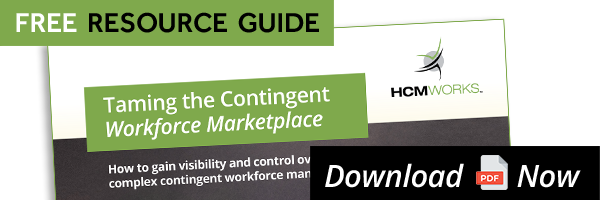Growth and expansion are at the top of the agenda for any business. However, to foster growth and to encourage the seamless operation of your business, it’s essential that you establish some well-thought-out processes that get the best out of your resources.
Setting up departments with expertise in a specific field, creating company-wide processes and having a plan for expansion will put your company in the best possible position to expand over time.
For any large organization looking to grow and improve their revenue, procurement must be an essential part of their company’s processes.
What is procurement?
In simple terms, procurement is the purchase and acquisition of good or services that enable your business to operate in a profitable and ethical manner. By purchasing products or services from the best supplier and at the best price, your company can boost profits.
Products and services acquired by the procurement team can include raw materials, contingent worker recruitment, office equipment, services, and supplies, furniture and facilities, technical equipment and support, telecommunications, printed collateral, testing and training, and travel-related services, among many others.
Procurement intertwines with many aspects and different departments of a large business, and therefore it’s essential that it is considered a core component of an organization’s corporate strategy.
Whether your company wants to hit specific goals and needs specialized workers to meet them, or you want to market yourself as an environmentally-friendly company, your procurement team must acquire the right talent or products to make this happen.
What is involved?
While procurement may sound straightforward in its simplest definition, a successful procurement strategy is highly complex. To ensure a profitable business, procurement departments must create a framework that identifies the requirement and need of each specific service or product.
Procurement teams must develop a strategy that looks at;
- identifying requirements;
- authorizing and approving a purchase request;
- identifying suppliers;
- making inquiries;
- receiving quotations;
- negotiating terms;
- selecting a vendor;
- creating a purchase order and goods receipt;
- managing shipping;
- receiving invoices;
- and making payment.
To successfully look at all of these elements, procurement departments must create a step-by-step procurement life cycle that identifies the requirement and need for products and services. Here are just a few of the steps this life cycle could include:
Identifying needs - The first step for a procurement team is to identify an organization’s needs for specific services or goods. This is generally to identify things that will help a company meet their overall goals for the year.
Find suppliers - Once the procurement team understands which services or goods are needed, it’s time to start reviewing potential suppliers and their price differences. It’s important to choose a supplier that works for the specific needs of your business.
Purchase order - Once a supplier is found, it’s time for the buyer to raise a purchase order that specifies all the details of the deal. This will include costs, delivery dates, expectations and more.
Invoicing and payment - Once invoices are sent it’s time to pay for the products and services you have acquired, or at least set up a payment strategy that both parties agree with.
Evaluation of past expenditure - Once you have acquired a product or service, it’s now time to evaluate it. This will help your organization to identify areas where you can reduce costs, become more efficient, and predict future needs.
What is the difference between procurement and purchasing?
Many people use the terms procurement and purchasing simultaneously, but there are some big differences between these roles. In fact, purchasing is a subdivision of procurement which just deals with the buying of goods and services.
Purchasing is the last steps of the procurement process in which the products or services acquired, and doesn’t include the whole procurement process of sourcing, negotiation, strategic selection etc.
Can procurement help you save money?
Previous research has found that procurement is often responsible for up to 70 per cent of a company’s' cost, so small reductions in costs can have a huge impact on profits.
By reducing purchasing costs on both products and services, your company can continuously improve profits. On the flip side, the lack of a procurement team and no strategic planning can see your organization paying over the odds for below par good and services.
Want to learn more about procurement and how an effective strategy will benefit your business? Contact HCMWorks today for more information.



